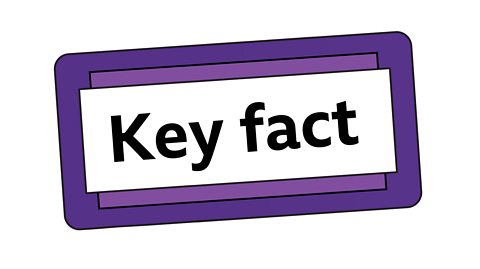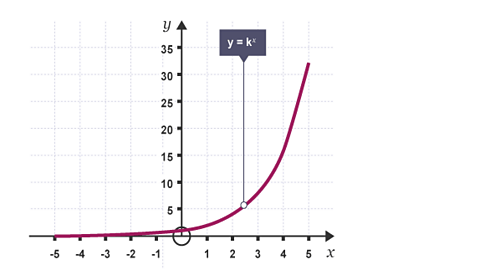Surds
It may be useful to revise M8 Rational and Irrational numbers and M4 Algebraic fractions.
Surds are irrational numbers containing a square root sign. They are square roots of numbers that are not square e. g. â17. Irrational numbers cannot be expressed as fractions.
Simplifying surds
Surds can be simplified if the number in the surd has a square number as a factor.
Remember these general rules:
- \(\sqrt{ab} = \sqrt{a} \times \sqrt{b}\)
- \(\sqrt{a} \times \sqrt{a} = a\)
- \(\frac{\sqrt{a}}{\sqrt{b}} = \sqrt{a \div b}\)
Example
Simplify \(\sqrt{12}\)
\(12 = 3 \times 4\), so we can write \(\sqrt{12} = \sqrt{(4 \times 3)} = \sqrt{4} \times \sqrt{3}\)
\(\sqrt{4} = 2\) so \(\sqrt{12} = 2\sqrt{3}\)
Simplify \(\sqrt{10} \times \sqrt{5}\)
\(\sqrt{10} \times \sqrt{5} = \sqrt{50} \)
\(50 = 25 \times 2\), so we can write \(\sqrt{50} = \sqrt{(25 \times 2)} = \sqrt{25} \times \sqrt{2} = 5\sqrt{2}\)
Simplify \(\frac{\sqrt{12}}{\sqrt{6}}\)
\(\frac{\sqrt{12}}{\sqrt{6}} = \sqrt{(12 \div 6)} = \sqrt{2}\)
Question
Simplify the following surds:
- \( \sqrt{8}\)
- \(\sqrt{8} \times \sqrt{4}\)
- \(\sqrt{18}\)
- \(\frac{\sqrt{18}}{\sqrt{9}}\)
Answer:
- \(\sqrt{4} \times \sqrt{2} = 2 \sqrt{2} \)
- \(\sqrt{(8 \times 4)} = \sqrt{32} = \sqrt{(2 \times 16)} = 4 \sqrt{2}\)
- \(\sqrt{2} \times \sqrt{9} = 3 \sqrt{2}\)
- \(\sqrt{(18 \div 9)} = \sqrt{2}\)

Ìę
Keeping a number in surd form until the final answer reduces rounding errors, which may affect a calculation requiring precise results.
Adding and subtracting surds
The rule for adding and subtracting surds is that the numbers inside the square roots must be the same.
Example
\(5 \sqrt{2} - 3 \sqrt{2} = 2 \sqrt{2} \)
This is just like collecting like terms in an expressionNumbers, symbols and operators grouped together - one half of an equation, eg 2bf + 2f + 3k.
\(4 \sqrt{2} - 3 \sqrt{3}\) cannot be added since the numbers inside the square roots are not the same.
Question
Simplify the following surds, if possible:
- \(2 \sqrt{3} + 6 \sqrt{3}\)
- \(8 \sqrt{3} + 3 \sqrt{2}\)
- \(2 \sqrt{5} + 9 \sqrt{5}\)
- \(8 \sqrt{3}\)
- Cannot add as the numbers inside the square roots are different.
- \(11 \sqrt{5}\)
It may be necessary to simplify one or more surds in an expression first, before adding or subtracting the surds.
Example
\(\sqrt{12} + \sqrt{27}\)
\(12 = 3 \times 4\) so \( \sqrt{12} = \sqrt{(3 \times 4)} = 2 \sqrt{3}\)
\(27 = 3 \times 9\) so \(\sqrt{27} = \sqrt{(3 \times 9)} = 3 \sqrt{3}\)
\(\sqrt{12} + \sqrt{27} = 2 \sqrt{3} + 3 \sqrt{3} = 5 \sqrt{3}\)
Question
Subtract these surds:
- \(\sqrt{12} - \sqrt{27}\)
- \(\sqrt{48} - \sqrt{12}\)
Answer:
- \(\sqrt{(4 \times 3)} - \sqrt{(9 \times 3)} = 2\sqrt{3} - 3 \sqrt{3} = - \sqrt{3} \)
- \(\sqrt{(3 \times 16)} - \sqrt{(4 \times 3)} = 4 \sqrt{3} - 2 \sqrt{3} = 2 \sqrt{3}\)
Find the exact perimeter of this shape:
Answer:
\(2 \sqrt{2} + 2 \sqrt{2} + 3 \sqrt{3} + 3 \sqrt{3} = 4 \sqrt{2} + 6 \sqrt{3}~\text{cm}\)
Multiplying and dividing surds
Multiplying surds with the same number inside the square root
We know that:
\(\sqrt{2} \times \sqrt{2} = 2\)
\(\sqrt{5} \times \sqrt{5} = 5\)
So multiplying surds with the same number inside the square root gives a whole, .
\((\sqrt{3})^2 = \sqrt{3} \times \sqrt{3} = \sqrt{9} = 3\)
Question
Simplify the following surds:
- \((\sqrt{7})^2\)
- \((\sqrt{11})^2\)
- \((\sqrt{15})^2\)
Answer:
- 7
- 11
- 15
Multiplying surds with different numbers inside the square root
First, multiply the numbers inside the square roots, then simplify if possible.
\(\sqrt{8} \times \sqrt{10} = \sqrt{80}\)
\(\sqrt{80} = \sqrt{(16 \times 5)} = 4 \times \sqrt{5} = 4 \sqrt{5}\)
\(2 \sqrt{3} \times 3 \sqrt{2} = \sqrt{(4 \times 3)} \times \sqrt{(9 \times 2)} = \sqrt{12} \times \sqrt{18} = \sqrt{216} = \sqrt{(36 \times 6)} = 6 \sqrt{6}\)
The quicker way of doing this is by multiplying the component parts:
\(2 \sqrt{3} \times 3 \sqrt{2}\)
Multiply the whole numbers:
\(2 \times 3 = 6\)
Multiply the surds:
\(\sqrt{3} \times \sqrt{2} = \sqrt{6}\)
This makes: \(6 \sqrt{6}\)
Dividing surds
Just like the method used to multiply, the quicker way of dividing is by dividing the component parts:
\(8 \sqrt{6} \div 2 \sqrt{3}\)
Divide the whole numbers:
\(8 \div 2 = 4\)
Divide the square roots:
\(\sqrt{6} \div \sqrt{3} = \sqrt{2}\)
\(4 \sqrt{2}\)
Question
Simplify the following surds:
- \(\sqrt{18} \times \sqrt{2}\)
- \(\frac{\sqrt{88}}{2}\)
- \(\sqrt{11}(2 - \sqrt{3})\)
Answer:
- 6
- \(\sqrt{22} \)
- \(2 \sqrt{11} - \sqrt{33} \)
Multiplying out brackets including surds
Expressions with brackets that include surds can be multiplied out in a similar way to multiplying brackets to give a quadratic expression.
Simplify fully \((3 + \sqrt{2})(2 + \sqrt{5})\)
Each term in the first bracket has to be multiplied by each term in the second bracket. One way to do this is to use a grid:
| âš | 3 | â2 |
|---|---|---|
| 2 | 6 | 2â2 |
| â5 | 3â5 | â10 |
The four terms cannot be simplified because each of the surds has a different number inside the square root, and none of the surds can be simplified.
\((3 + \sqrt{2})(2 + \sqrt{5}) = 6 + 2 \sqrt{2} + 3 \sqrt{5} + \sqrt{10}\)
The same method can be used if the numbers in the surds are the same:
Simplify fully \((1 + \sqrt{2})(5 + \sqrt{5})\)
| âš | 1 | â3 |
|---|---|---|
| 5 | 5 | 5â3 |
| -â3 | -â3 | -3 |
The surds have the same number inside the square root, so they give a rational number when multiplied together. The four terms can be simplified by adding together the rational terms and the irrational terms:
\((5) + (-3) = 2\) and \((5 \sqrt{3}) + (- \sqrt{3}) = 4 \sqrt{3}\), so \((1 + \sqrt{3})(5 - \sqrt{3}) = 2 + 4 \sqrt{3}\)
Question
Simplify fully the following:
- \((7 + \sqrt{3})(8 + \sqrt{2})\)
- \((4 - \sqrt{6})(3 + \sqrt{6})\)
Answer:
- \(56 + 8 \sqrt{3} + 7 \sqrt{2} + \sqrt{6}\)
- \(12 + 4 \sqrt{6} - 3 \sqrt{6} - 6 = 6 + \sqrt{6}\)
Rationalising denominators
A fraction with an irrational number (including a surd) in the Rationalising denominatorsThe bottom part of a fraction, e.g. for â , the denominator is 8, which represents 'eighths'. can be simplified by making the denominator rational. This process is called rationalising the denominator.
If the denominator has just one term that is a surd, the denominator can be rationalised by multiplying the numerator and denominator by the same surd.
Example
Simplify \(\frac{\sqrt{8}}{\sqrt{6}}\)
The denominator can be rationalised by multiplying the numerator and denominator by â6.
\(\frac{\sqrt{8} \times \sqrt{6}}{\sqrt{6} \times \sqrt{6}} = \frac{\sqrt{48}}{6} = \frac{\sqrt{(16 \times 3)}}{6} = \frac{4 \sqrt{3}}{6} = \frac{2 \sqrt{3}}{3}\)
Question
Rationalise the denominator of the following:
- \(\frac{1}{\sqrt{2}}\)
- \(\frac{\sqrt{3}}{\sqrt{2}}\)
- \(\frac{5}{2 \sqrt{3}}\)
Answer:
- \(\frac{\sqrt{2}}{2}\) - Multiply top and bottom by â2
- \(\frac{\sqrt{6}}{2}\)
- \(\frac{5 \sqrt{3}}{6}\)
Test yourself
More on M8: Algebra
Find out more by working through a topic
- count6 of 7

- count1 of 7
